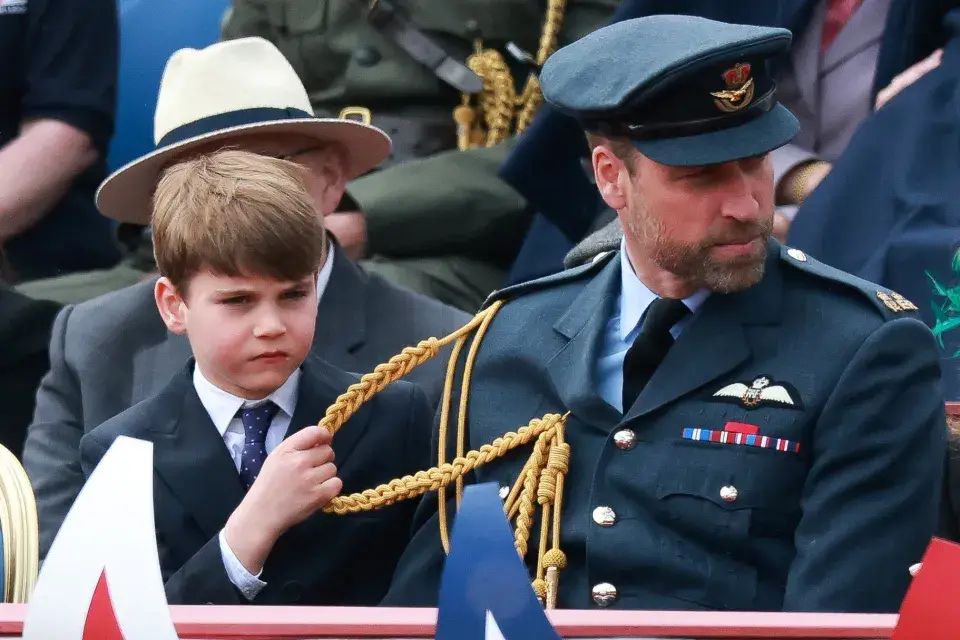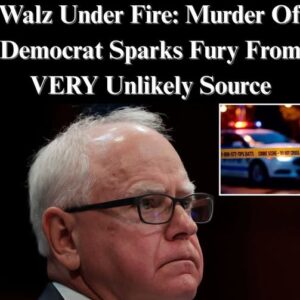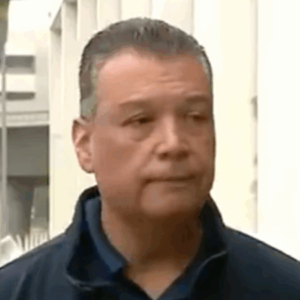On May 5, 2025, the United Kingdom paused to honor the 80th anniversary of Victory in Europe Day (VE Day), marking the formal capitulation of Nazi Germany and the end of hostilities in Europe in 1945. From grand processions down The Mall to neighborhood street parties and poignant veteran reunions, the nation came together in remembrance of the sacrifices made by the wartime generation. Amid these solemn tributes, an unexpectedly delightful moment captured global attention: during the VE Day parade, five-year-old Prince Louis appeared to lean toward his father, Prince William, and ask a hilariously candid question—one that lip-reading experts have since decoded. This article provides a polished, in-depth account of the day’s events, the context behind VE Day, and the now-legendary exchange between father and son, offering readers an engaging narrative suitable for web publication.

1. VE Day at 80: Historical Significance and National Reflection
Victory in Europe Day occupies a place of profound importance in British—and indeed global—history. On May 8, 1945, Allied commanders accepted Germany’s unconditional surrender, effectively bringing the European theatre of World War II to a close. Eight decades on, VE Day remains a powerful symbol of collective sacrifice, resilience, and the enduring values of freedom and democracy. In 2025, the nation marked this milestone with ceremonies at Westminster Abbey, local memorial services, and educational initiatives designed to connect younger generations with the stories of those who endured wartime privation and combat.

2. The Royal Family’s Central Role in Commemoration
Since 1945, the British monarch and senior royals have played an integral role in VE Day ceremonies, offering wreaths at the Cenotaph, delivering national messages of gratitude, and personally greeting veterans. In 2025, King Charles III and Queen Camilla upheld this tradition by hosting a Buckingham Palace garden party for surviving veterans and their families. The King’s address paid tribute to the “extraordinary courage and unity” of the wartime generation, while the Queen shared tea and conversation beneath spring blooms with heroes whose experiences span Normandy landings, Luftwaffe bombings, and the long road to peace.
3. The Mall Procession: Ceremony and Pageantry
At 11:00 a.m. BST, Buckingham Palace’s façade opened onto The Mall, where thousands gathered behind barriers to witness a military procession. Grenadier Guards marched in bearskins, Household Cavalry trotted ceremonially on horseback, and contingents from allied Commonwealth nations—Canada, Australia, New Zealand—traversed the avenue in uniform. Overhead, the Royal Air Force’s famed Red Arrows performed a precision flypast, trailing red, white, and blue smoke. The combination of martial pomp and poignant silence at moments of remembrance underscored VE Day’s dual nature as both celebration and solemn tribute.

4. The Cambridge Family Arrives: William, Kate, and the Children


Ten minutes before the parade’s commencement, Prince William, the Princess of Wales, and their children—Prince George (11), Princess Charlotte (8), and Prince Louis (5)—joined King Charles and Queen Camilla on a raised dais in front of Buckingham Palace. Clad in coordinating navy and cream ensembles, the family projected both regal dignity and warmth. From their vantage point, the Cambridges observed the march past, occasionally waving to veterans and onlookers. Their presence bridged generations: William and Kate represent modern parental figures, while their children embody the future of the monarchy.

5. A Moment of Tender Mischief: Louis’s Water-Brushing Gesture
As the Royal Family rose to acknowledge the prime minister and cabinet members crossing the parade route, Prince Louis was captured brushing rain-laden droplets off his father’s military tunic. The spontaneous act of care elicited smiles from William, who leaned toward his youngest son and gently tapped him on the leg. Cameras panned in for a close-up, setting the stage for the next, even more memorable exchange.
6. Lip-Reading Uncovers the Cheeky Exchange
In the hours after the broadcast, lip-reading specialist Nicola Hickling analyzed high-resolution footage frame by frame. Her transcription, published in The Sun, suggests that Prince William observed, “Look at this—you’re going to get wet today,” perhaps referencing the light drizzle overhead. To this, Louis purportedly replied with perfect five-year-old incredulity: “Wasn’t this supposed to be fun?” William then reassured him: “It is, son. You’ll never forget this.”
This charming retort—met with affectionate laughter from onlookers—revealed Louis’s keen awareness that ceremonial duties could sometimes feel more like work than play. A palace aide confirmed that the prince’s question captured the essence of childhood curiosity amid solemn state events.
7. Princess Charlotte’s Sweet Whisper
Hickling’s analysis did not end with Louis. The lip reader also noted a brief exchange between Princess Charlotte and her mother. As the family prepared to leave the dais, the Princess of Wales apparently whispered, “Doesn’t Papa look smart today?” Charlotte beamed, responding to Queen Camilla’s navy-blue dress uniform and Charles’s polished medals—a reminder of the children’s admiration for their grandfather’s role.
8. Extending the Tribute: Veterans’ Tea Party
Following the parade, the Cambridges departed the palace grounds for an intimate tea party held in the royal gardens. There, Prince George engaged with 101-year-old Royal Engineers veteran Alfred Littlefield, who served during D-Day in June 1944. George asked with sincere interest, “How old were you when you served, Grandpa?” Littlefield’s granddaughter, Samantha Davidson, recounted to PA Media that the boy’s respectful demeanor and thoughtful questions deeply moved the centenarian. Similarly, William introduced George to Douglas Hyde, a former naval rating, emphasizing that his son “is very keen” to learn first-hand stories—underscoring the family’s commitment to passing down living history.
9. Public Reaction and Social Media Buzz
Within minutes of the lip-reading story breaking, #PrinceLouis and #VE80 trended across X, Instagram, TikTok, and Facebook. Fans created GIFs looping Louis’s incredulous expression, while meme-makers added playful captions such as “When the coronation rehearsals feel like a chore” and “Big bro does it cool, little bro does it better.” Royal commentators on morning shows praised Louis for injecting levity into the day’s solemnity, and brand strategists highlighted the monarchy’s expert blend of tradition and accessibility—demonstrating that even the youngest royals can resonate deeply with global audiences.
10. Expert Perspectives on Royal Engagement
Media Psychologist Dr. Helen Fisher notes, “Spontaneous moments of authenticity, especially involving children, create powerful emotional connections. Prince Louis’s candid question humanizes the institution, reminding viewers that royals experience apprehension and wonder just like any child.”
Historian Dr. Robert Lacey adds, “The monarchy thrives on a balance of pageantry and personal relatability. VE Day 2025 perfectly illustrated this dynamic, marrying high ceremony with heartfelt family interactions.”
11. The Importance of Intergenerational Memory
By actively involving the London-born Cambridges in VE Day events, Buckingham Palace emphasizes the importance of intergenerational engagement. As survivors of World War II dwindle in number, opportunities to record oral histories and facilitate direct dialogue become ever more precious. When Prince George, Charlotte, and Louis converse with veterans, they absorb lessons in resilience, duty, and sacrifice—values that will shape their future roles as senior royals.
12. Balancing Pageantry with Parenthood
For William and Kate, participating in state ceremonies entails walking a fine line between fulfilling constitutional duties and shielding their children from undue pressure. Their decision to bring George, Charlotte, and Louis to VE Day events reflects a broader strategy: familiarize the heirs with public service early, while preserving moments of sibling camaraderie and light-heartedness. The hair–brushing exchange and Louis’s quip exemplify this delicate equilibrium—mixing dignity with genuine affection.
13. The Modern Monarchy in a Digital Age
In an era dominated by nonstop social media coverage, the Royal Family’s unscripted gestures quickly become global talking points. Palace communications teams recognize that candid moments—like a child’s cheeky question—serve as invaluable “soft power,” promoting goodwill and elevating the monarchy’s relevance. By allowing cameras unobstructed access to family interactions on the palace balcony, the royals cultivate transparency and human interest without compromising decorum.
14. Reflections from VE Day 1945 to 2025
Eighty years have passed since Winston Churchill’s stirring radio broadcasts and the impromptu street singing of wartime tunes. Today’s VE Day commemorations stand as living testaments to a generation that endured bombings, rationing, and unimaginable loss. As the country paused this May, watching the Royal Family honor veterans and share tender family moments, it reaffirmed that remembrance and renewal go hand in hand—and that humor and humanity remain vital threads in the nation’s fabric.
Conclusion
VE Day 2025 will be remembered not only for its commemorations of bravery and sacrifice, but also for the spontaneous warmth radiated by the young Cambridges. Prince Louis’s lip-read: “Wasn’t this supposed to be fun?” captured hearts around the world, reminding us that even the grandest ceremonies can include a moment of childhood candor. As King Charles III, Queen Camilla, and the Wales family lead the nation in honoring the wartime generation, they also offer a vision of continuity—where tradition, family, and genuine connection unite in service of collective memory and national pride.






